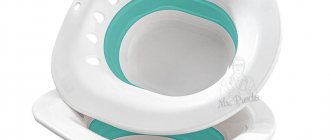It is not for nothing that hemorrhoids are considered a disease of those who move little. So-called physical inactivity affects the body in several directions at once: the strength and elasticity of blood vessels decreases, the load increases due to excess weight, intestinal motility decreases and blood flow slows down. All these phenomena, even individually, provoke the appearance of hemorrhoids. That is why doctors increasingly recommend gymnastics for the treatment of hemorrhoids. With its help, you can get rid of unpleasant symptoms and reduce the risk of exacerbations of the disease in the future.
Benefits of exercise
There is a lot of talk about the benefits of physical activity, especially when the issue concerns vascular pathologies, which include hemorrhoids - the most common “sedentary” disease of our time. Every third adult suffers from it. The problems of this disease, which conventional therapeutic exercises help to solve, are as follows:
- Congestion in the pelvis, which contributes to excessive stretching of the vascular walls. Blood accumulates in the resulting “pockets,” which often thickens—this is how blood clots form.
- Slowing of intestinal motility, as a result of which the patient begins to experience constipation. Increased straining causes even greater blood flow to the rectum, which causes even greater swelling of the blood vessels, and the mucous membrane is injured.
It is not possible to eliminate such processes quickly and only with the use of medications, especially if you maintain the same level of physical activity. That is why gymnastics for hemorrhoids is used - a set of exercises designed to reduce pathological processes.
What are the pelvic floor muscles responsible for?
The lower spine and pelvic bones protect the muscles. Between the tailbone and the pubic bone are the necessary muscles. They firmly hold the bladder, rectum, uterus, prostate and other internal genital organs located in the pelvis. Muscles hold the organs in a constant correct position and do not allow them to fall down and fall out. With the help of strong muscles, it is possible to control the processes of urination and defecation.
It often happens that the pelvic floor muscles become weak and flabby. This can happen for a variety of reasons, the most common of which are difficult childbirth and old age.
Due to weakness of the pelvic floor muscles, serious health problems arise:
- urinary incontinence (stress, urgency, mixed, paradoxical);
- prolapse or prolapse of the uterus;
- fecal incontinence;
- prostatitis;
- haemorrhoids;
- various sexual dysfunctions.
Strengthening the pelvic floor muscles is necessary not only for treatment, but also for the prevention of diseases.
Sets of exercises for hemorrhoids
There are several sets of exercises that are effective against the manifestations of hemorrhoids, which are recommended to be used both at the treatment stage and as a preventive measure for the enlargement of hemorrhoids. They can be practiced at home, but only after mastering the basic elements under the guidance of a specialist.
The following techniques are considered suitable for eliminating the symptoms of hemorrhoids:
- a set of Kegel exercises is an effective gymnastics for strengthening the muscles of the perineum and pelvic floor, which improves blood flow and has a positive effect on the condition of blood vessels;
- classical therapeutic exercises using general strengthening exercises, which helps activate blood circulation throughout the body and improves intestinal motility;
- breathing practices - gymnastics according to Norbekov and Strelnikova, which help normalize digestion, accelerate peristalsis, saturate tissues with oxygen and help improve blood circulation throughout the body.
Yoga is also becoming increasingly popular - this exercise for hemorrhoids is used to relieve discomfort and also prevent the progression of the disease. A sport such as swimming also works well against hemorrhoids.
Before starting to use any complex, it is recommended to do them for several days under the guidance of a physical therapy specialist, who will tell you the intricacies of performing individual exercises.
Methods of prevention and treatment
Thanks to modern science, we have a wide choice of means to combat hemorrhoids. This includes:
medicinal effects;- ointments, compresses, baths;
- minimally invasive surgery;
- radical surgery;
- physical therapy for hemorrhoids.
However, a large number of funds and their availability does not mean that you can continue to live as before, they say - medicine will fix everything.
With all due respect, the possibilities of even modern healthcare are not limitless. And if a person does not radically reconsider his lifestyle and establish healthier norms of nutrition and movement, then he can easily fall into those 79% of patients who are faced with cancer, despite all the efforts of doctors.
Exercises for home practice
To eliminate hemorrhoids at home, any gymnastic exercises that do not require great physical strength are suitable. For them to be truly useful, patients should learn the following basic rules:
- Do not hold your breath while performing the exercises. It should be smooth and deep. Otherwise, there is a possibility of increased pressure in the pelvic vessels.
- All movements should be as smooth and even as possible, without jerking.
- To achieve a positive effect, you need to increase the intensity of exercise gradually. Lighter exercises are performed first, and then those that require increased concentration.
- If discomfort occurs, the activity should be interrupted.
For gymnastics to treat hemorrhoids to work, you need to practice it daily. Even short breaks can nullify all efforts. The duration of the exercises should be at least 10-15 minutes a day.
What exercises can you do for hemorrhoids:
- marching walking in place, during which the knees rise as high as possible;
- scissors (performed with the legs in a lying position) in the classic form and vertical, when one leg rises up and the other is pressed to the floor;
- bending from a lying position, in which the pelvic area is lifted off the floor and held for 15-30 seconds (the buttocks are tense);
- birch tree - a classic exercise familiar to everyone;
- arching the back in a kneeling position with support on the hands (“Cat back”);
- rotating imaginary pedals from a lying position;
- swing your legs back and forth and left and right from a standing position;
- walking on the floor on the buttocks - such walking strengthens the pelvic muscles and improves blood circulation in the rectum.
You need to spend at least 3 minutes to complete each exercise. It is recommended to do them in combination with each other in the morning and evening. During the day, it is recommended to do gymnastics for hemorrhoids using the Kegl method. It, unlike previous options, can be carried out virtually unnoticed by others. The essence of such exercises is tensing the muscles of the anus and perineum with a delay at the peak for 5-15 seconds, followed by relaxation. You need to repeat such exercises 10-20 times three times a day or more often.
(video about exercises for hemorrhoids)
Features of classes for women over 50
Women who have celebrated their anniversary should not consider themselves pensioners and give up intimate life. With age, the muscles of the vagina lose their tone, and the pressure of the uterus on the bladder often provokes incontinence. If you supplement the sensations with manifestations of menopause, the picture is not rosy. There is a solution to the problem: thanks to Kegel gymnastics for women, you can restore muscle tone at any age, eliminate discomfort, and prevent diseases of the pelvic organs. It will take longer to practice until you get the desired result than in your youth, but the effect will be there.
Hemorrhoids and yoga
Yoga exercises are used primarily for the prevention of hemorrhoids, as this exercise helps improve intestinal motility and prevents constipation. It is necessary to select asanas with the condition that they do not contribute to an increase in pressure in the abdominal cavity, and also do not require prolonged sitting.
The simplest and most useful asanas for the prevention of hemorrhoids are:
- Mountain pose - performed standing with legs slightly apart. While lifting onto your toes (while inhaling), you need to slowly pull in your stomach and tense your gluteal muscles, pushing your pelvis slightly forward. At the same time, hands slowly rise. At the same time, hands slowly rise. Then you return to the starting position (exhale).
- Bend tree - performed in a standing position with legs slightly apart. The arms are stretched upward as much as possible, while at the same time bending to the sides is carried out. Important! Only the waist should bend - the hips and pelvis remain motionless.
- Cobra twist - performed in a standing position on tiptoes with legs apart. The shoulders and head are turned to the side until the heel is visible (when turning right - left, when turning left - right).
After the listed asanas have been mastered, you can begin to perform more complex exercises. This should be done under the guidance of a specialist, since yoga is very difficult to master on your own.
?list=PLPLxIP6Fg-7Kcv9NfInprgu0uad3xNiH0 (yoga for hemorrhoids)
How to feel your pelvic floor muscles
There are several techniques that will allow you to feel the pelvic floor muscles. While in the toilet, you need to imagine the process of urination and tense only the pelvic muscles, without the participation of the abdominal press. You need to feel and remember these muscles. This technique will help both women and men find muscles. But you can’t suddenly stop the process of urination, as this can weaken the muscles.
Then you need to tense the muscles that allow you to restrain the process of gases and feces leaving the intestines. Only the pelvic muscles should be involved, not the buttocks. If, during muscle tension, the patient rose slightly upward, it means that he tensed the muscles of the buttocks, not the pelvis.
Women can also carefully insert two fingers into the vagina 2 cm. The fingers should be pressed between the muscles.
In order not to harm your health, you need to completely relax your muscles after tension.
Exercises that can be harmful
Not every gymnastics for hemorrhoids can be useful. Very often, patients get overly carried away by trying to improve their condition and go to a regular gym, without telling the trainer about their delicate problem.
Exercises that can worsen the condition and even cause hemorrhoids to worsen include:
- strength training that uses heavy weights;
- Weightlifting;
- working out the abdominal muscles in the classical way (lifting the torso or legs);
- performing deep squats.
The permitted exercises will not bring any benefit if you perform them sharply, quickly, and at the same time hold your breath.
(video about strength training and hemorrhoids)
What to do if exercises don't help
With serious muscle damage, training may not bring a therapeutic effect. If Kegel exercises do not help, you should immediately consult a doctor. He will prescribe a different course of treatment. In severe cases, patients are referred for surgery.
A doctor’s consultation will be needed if the patient was unable to find his pelvic muscles or if pain and other unpleasant symptoms occurred during training. Kegel exercises usually do not cause pain, but this may occur if the patient has a history of severe injury, difficult childbirth, or chronic muscle disease.
Is it possible to exercise during menstruation?
If you regularly do Kegel exercises for women, menstruation will be less painful. Many girls and women around the world experience severe pain, from which they save themselves with pills. But you don’t have to take strong medications every month. You can try to perform simple actions to strengthen the intimate areas and reduce the discomfort that occurs on “critical” days, if it is not associated with the presence of pathology.
During menstruation, Kegel gymnastics does not pose a threat to women, you just need to avoid overloading the body. You cannot immediately go for a record - the number of repetitions and the time of muscle contraction are increased gradually.
Charging should be postponed in case of infectious diseases of the genitourinary system. Only after consulting a doctor and making a diagnosis, having completed the prescribed treatment, can you resume gymnastics as soon as your health returns to normal.
Also watch our video tutorial:
Is it worth exercising if you have prostatitis?
Prostatitis is detected in men of different ages, causing a lot of unpleasant sensations. This is a burning sensation in the perineum, spasms and swelling, a sensation of a foreign body and pain in the lower abdomen. Erections decrease, sperm turns yellow, and medications are not always effective. Kegel exercises for men improve blood circulation due to forced contractions and relaxations of the prostate and clear the prostate ducts of accumulated secretions. Training acts as an internal massage, which affects not only the prostate, but also the seminal vesicles.
The set of classes must include a Kegel exercise for men in the form of forceful pushing (squeezing). After about 2 weeks, you may notice discharge from the urethra in the form of a jelly-like substance. In parallel with this, the symptoms of prostatitis weaken. In the future, if you do not stop training, pure prostate secretion will be released instead of clots, and after 2 months the discomfort may completely disappear. At the same time, the erection should return, and the color of the sperm will become normal.
Kegel exercises for men and those who have had their prostate removed will not hurt. Gymnastics is included in rehabilitation activities, but the intensity and pace of training is limited so as not to damage blood vessels. Thanks to gentle stimulation of blood supply, the risk of hematomas and inflammation can be reduced.










